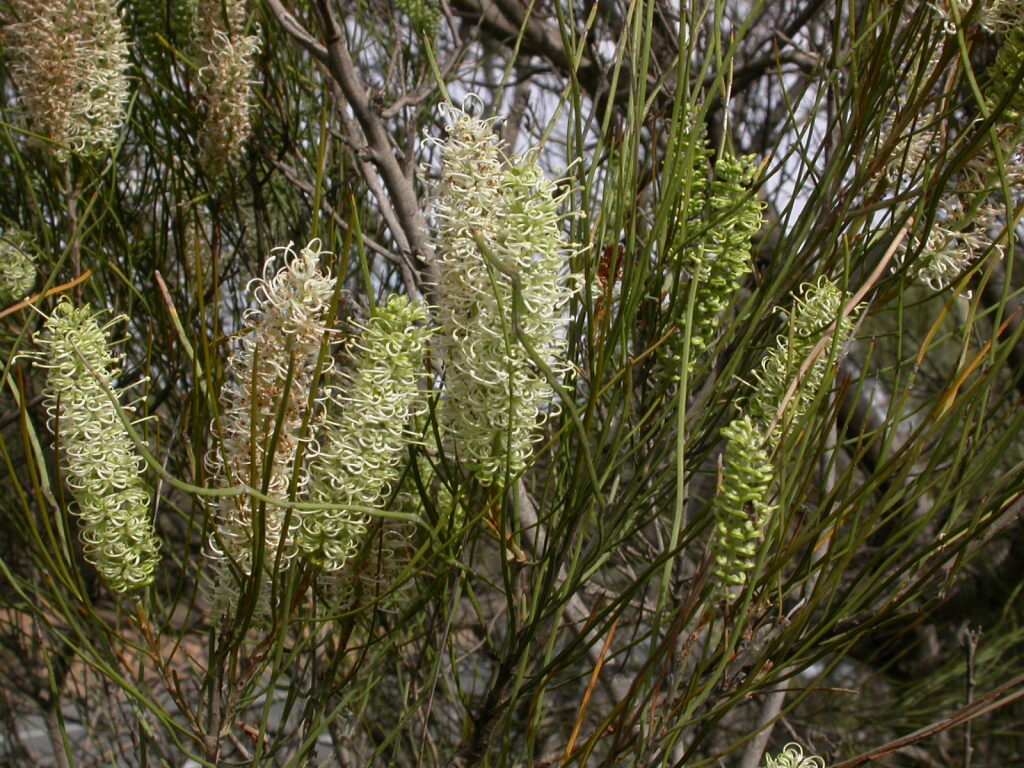Grevillea
Prostrate to erect shrubs or, rarely, small trees. Leaves alternate, simple, or with up to 3 orders of division. Unit inflorescence a pair of flowers subtended by a common floral bract, sometimes 1 flower of the pair abortive; unit inflorescences commonly aggregated into a racemose unit conflorescence of subglobose to secund or cylindric form, these sometimes branched; flowers zygomorphic with a dorsiventral plane of symmetry; perianth in bud with a knob-like apical limb (cohering anther-bearing terminal cups of the tepals); tepals 4, separating at least partially at anthesis; anthers sessile in the limb; nectary situated on ventral side of the torus (receptacle); ovary stipitate or sessile, ovules 2, style elongate, terminating in an expanded style-end bearing the pollen-presenter, on which the stigma is ± central. Fruit a follicle or rarely (not in Victoria) an achene, 1- or 2-seeded; seeds winged or with an elaisome.
The third largest plant genus in Australia, with c. 360 species, occurring in all States (1 species in Tas.); 3 in New Guinea, 1 in Sulawesi, 3 in New Caledonia.
Many selections of species, and many artificial hybrids, have been made for horticulture and some for agroforestry applications.
Makinson, R.O. (1996). Grevillea. In: Walsh, N.G.; Entwisle, T.J., Flora of Victoria Vol. 3, Dicotyledons Winteraceae to Myrtaceae, pp. 845–870. Inkata Press, Melbourne.
 Spinning
SpinningMakinson, R.O. (2000). Grevillea. In: Australian Biological Resources Study, Flora of Australia vol. 17A, Proteaceae 2, ~Grevillea~, pp. 1–524. CSIRO Publishing.




